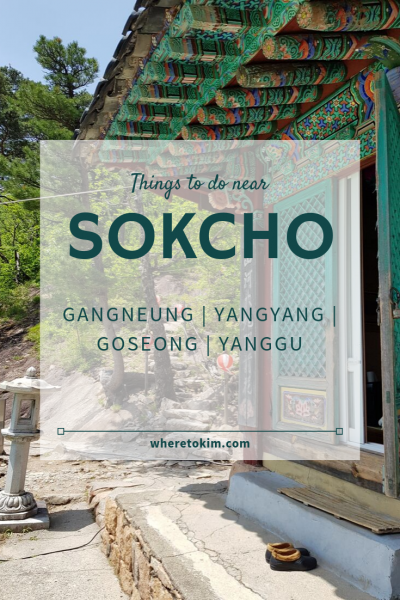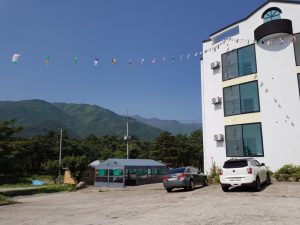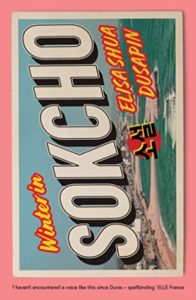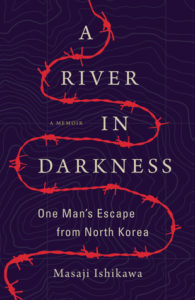Planning a trip to Sokcho, South Korea? Find out about the best things to do in Sokcho and the nearby Yangyang and Gangneung.
Sokcho, a small town on the eastern coast of South Korea is well known for being one of the gateways for exploring Seoraksan National Park. (And among a niche group it is also known as the first city in South Korea where you could play Pokémon Go). Less known is that Sokcho also offers nice beaches and many cultural sites in the area. The DMZ is also reachable within one hour.
How to get to Sokcho
By car: Sokcho is a two-hour drive from Seoul
By plane: Yangyang International Airport is only 20 km from Sokcho
By public transport: a direct bus takes you in two and a half hours from East Seoul Bus Terminal to Sokcho
If you are considering a visit to Sokcho as a day trip from Seoul, then check out the tours by GetYourGuide for a fully organised trip.
Where to stay in Sokcho
Sokcho has many hotels in the area. If you’re traveling by public transport then a hotel in the city itself is recommended so you have better access to buses and restaurants. If you have a rental car then it is more interesting to look for a place closer to Seoraksan, surrounded by nature.
When I did this trip in May 2018 I stayed at Seorak Pension and I can highly recommend this pension. It is located in a quiet area between Sokcho and Seoraksan National Park. The Japanese rooms are quite big and clean and the owners are very friendly. When I was staying there they brought over Korean tea and iced tea when they saw me reading a book in the BBQ and picnic area next to the hotel. If you travel by car, you can park it right next to the pension. If you’re using public transport you’re probably better off nearer to the city center of Sokcho.
Things to do in and near Sokcho
You can find all the things to do near Sokcho on my Google map.
Visit Seoraksan National Park
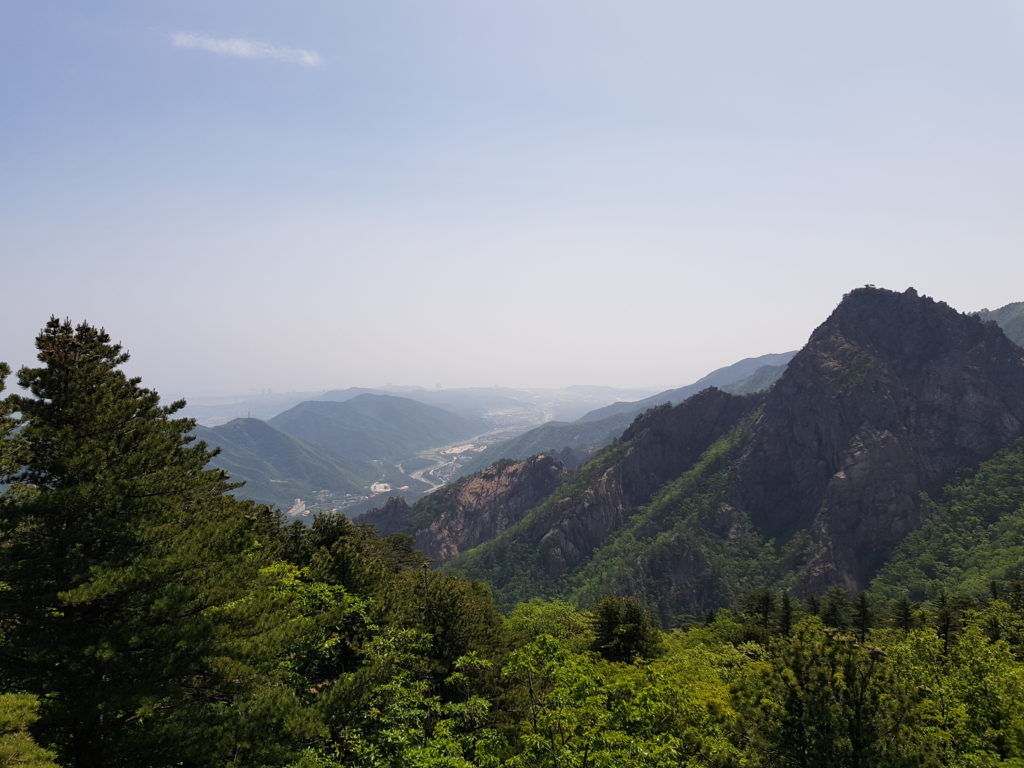
This beautiful national park has a variety of hiking routes and what’s also great: you can take the cable car to the top and reach a good viewing point. From the exit of the cable car, it is only a ten-minute walk to Gwongeumseong Fortress remains. This is great if you want a more relaxing day or if you are not able to walk for hours. The cable car is very near to the entrance of Sogongwon Park. It’s worth it to look around the park itself as well as there are many statues to see.
From Gwongeumseong Fortress you can follow a short side trail (starting near the service building) to a remote temple (see my pinterest picture at the bottom of this post for an impression). Outside of the busy season, you’ll probably be the only one taking this path!
If you want to go hiking there are many trails to choose from. Especially those to Ulsanbawi Peak, Biryong Waterfall, Geumggangul Cave and Biseondae are popular.
Please check if there are any access restrictions before your visit to Seoraksan National Park.
Abai Village
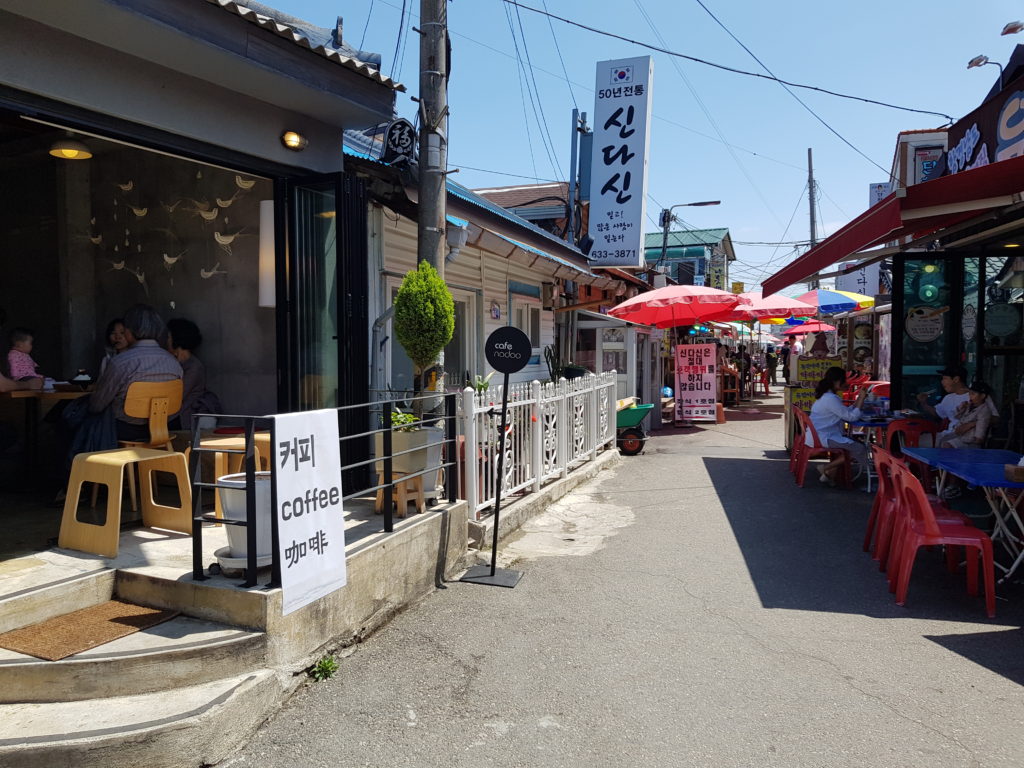
A small village of North Korean expats on an island near Sokcho. You can take the boat, but also drive over the bridge and park on the island itself. The village is small, but there is a lovely beach at the end with a nice view of Sokcho with the mountains in the backdrop. While you’re there try the Korean specialty Abai Sundae: blood sausage with squid casing and filling.
Sokcho Tourist and Fishery Market
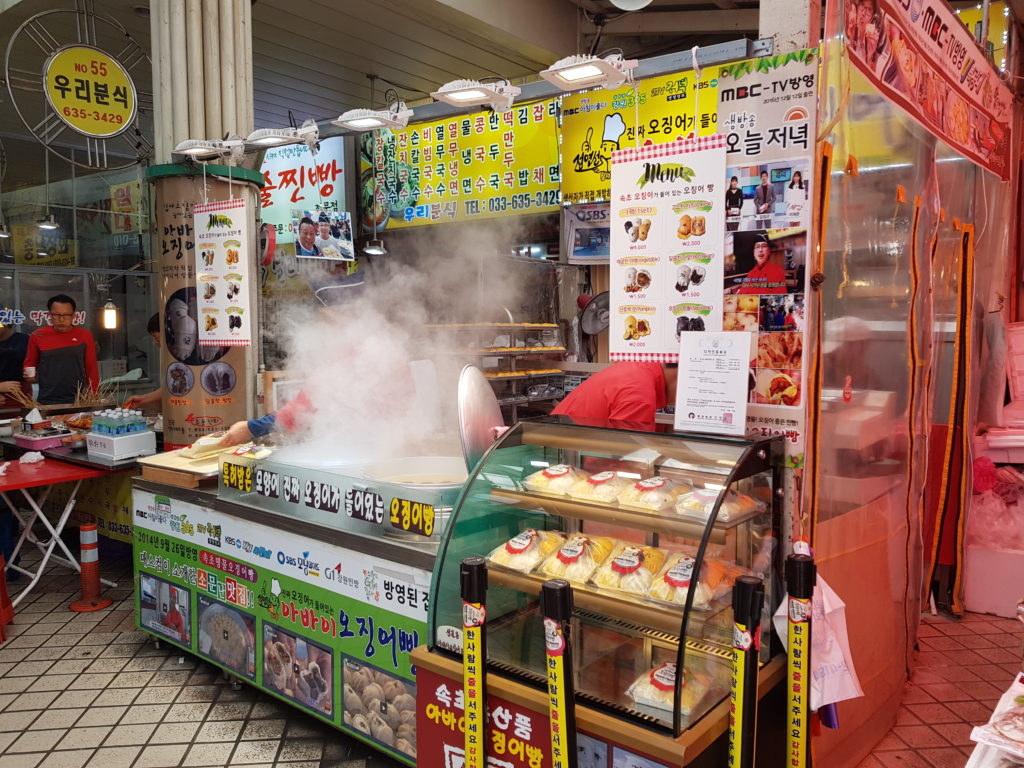
Score some fresh sashimi or try numerous other snacks or meals in one of the stalls. In the picture above you can see their Squid bread which you can eat with either Pumpkin, Cheese, Vegetable, Red bean or Squid ink filling.
If you’re wondering why half of the people you see are carrying flat boxes (sometimes six of them), head over to Manseok chicken stall and try their fried chicken (recommended!).
How to get there
The market is in the middle of the city. Try to park at the big parking lot south of the market (near the river).
Opening hours
From 08:00. The exact times vary per store.
Naksansa Temple (Yangyang)
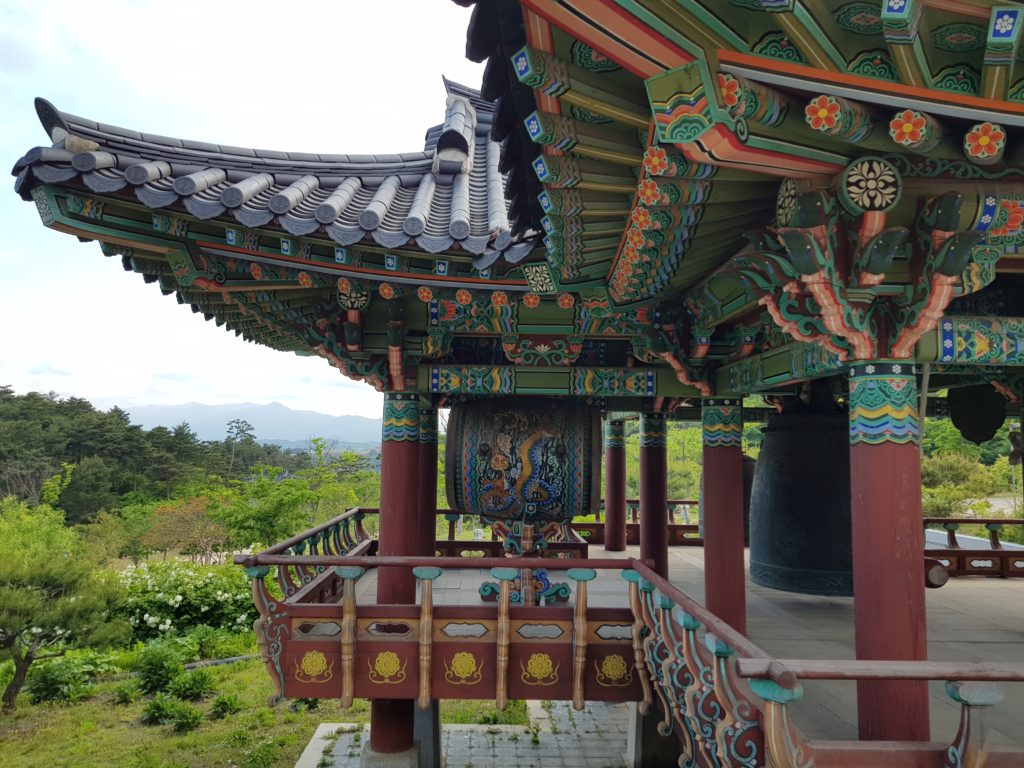
Beautiful temple grounds featuring many small buildings and temples, statues and a giant Stone Buddha. It’s only a short drive south of Sokcho and can easily be combined with a day trip to Gangneung.
How to get there from Sokcho
Drive 11 minutes south along the coast. There are parking lots near the harbor but you can also drive all the way up to the entrance to park there (might be full at busy times).
Opening hours
6:00 – 20:30
Olympic Stadium (Gangneung)
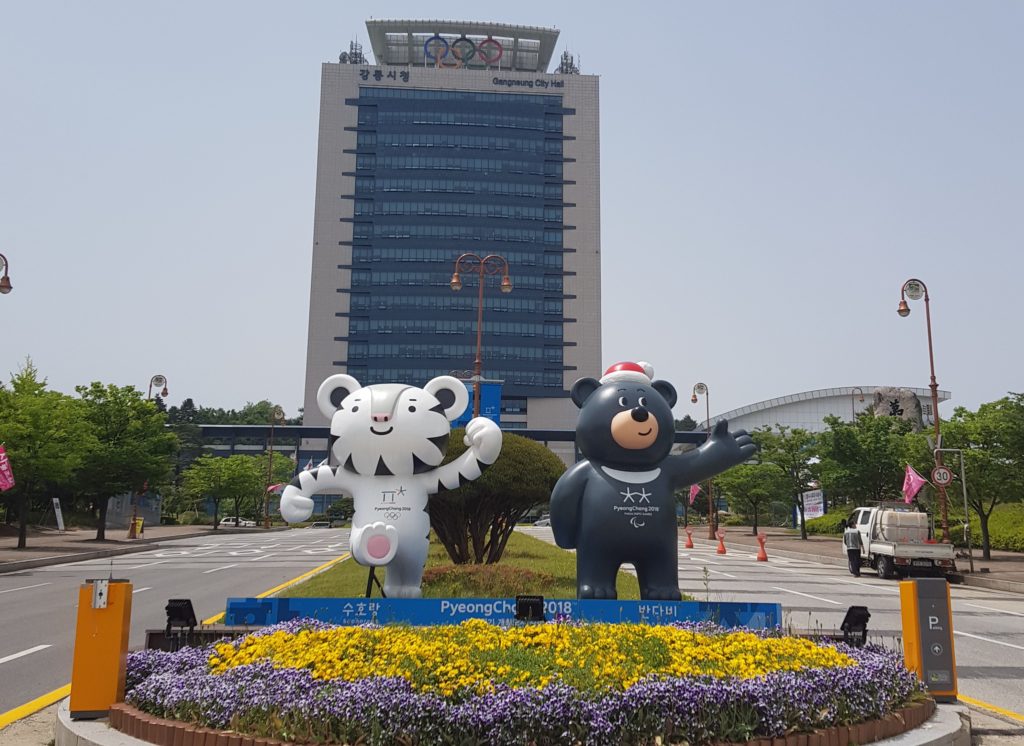
The 2018 Winter Olympics were partly held in Gangneung. You can still see the stadium that was used, and if you drive on to Gangneung City Hall you can see the statues of the Olympics mascots, though they might not always be there. For me, this was an interesting stop as I went there within months after the Olympics, but years later it might not be as interesting.
Gyeongpo Provincial Park (Gangneung)
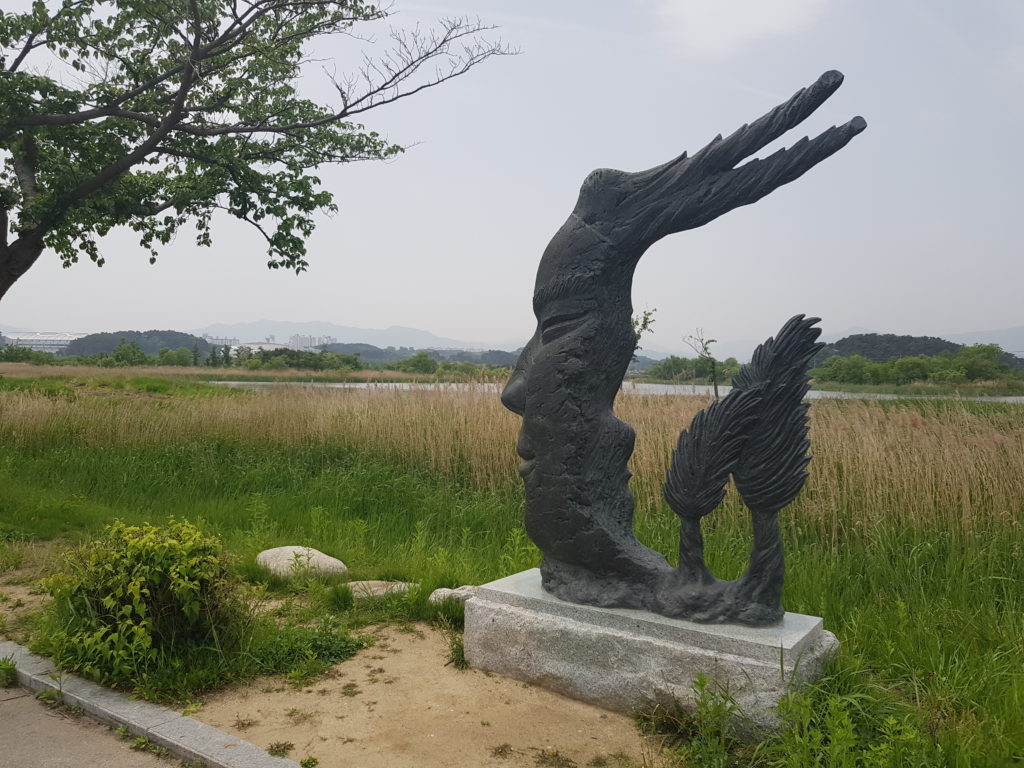
Gyeongpo Provincial Park is a small wetland reserve with interesting sculptures. I originally went there to see the lotus pond, but unfortunately, it was one big mud pool when I went in May 2018. Even without the lotus pond, the park is a great place for a stroll. Extra: from the park, you can see the Olympic Stadium.
Ojukheon House (Gangneung)
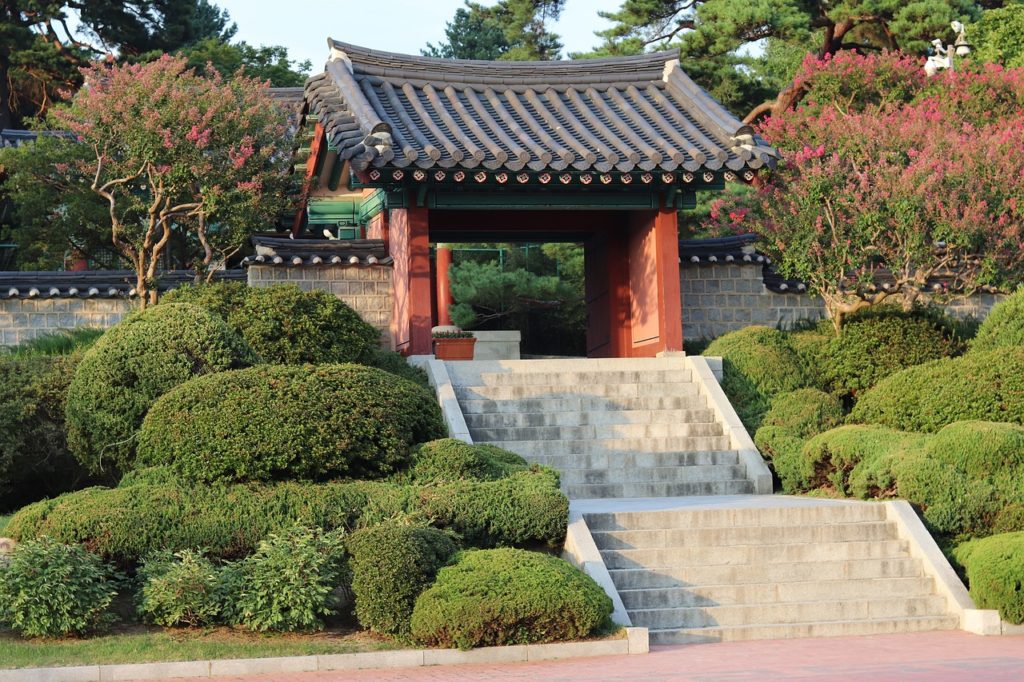
This house, built about 500 years ago, is the birthplace of the Confucian Scholar Yi I and his mother Shin Saimdang. It was featured in the Korean TV drama Saimdang, Light’s Diary and has been designated as a national treasure.
Opening hours
8:00 – 18:00, but 9:00 – 18:00 in winter
Jeongdong Simgok sea fan road (Gangneung)
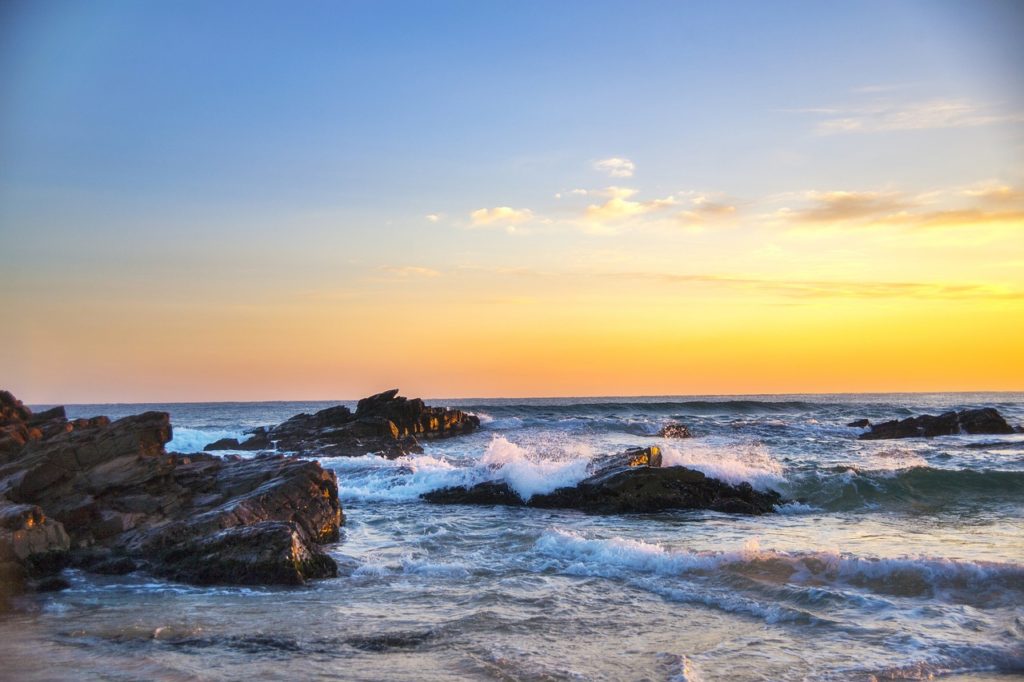
An almost 3km man-made coastal trail connecting Jeongdongjin and Simgok port. It has recently (2016) been opened to the public after being used exclusively by the coast guard. From the trail, you can watch the tectonic changes of millions of years ago.
Opening hours
Summer (April to October): 09:00 ~ 17:30 (Ticketing Time: Until 16:30).
Winter Season (November ~ March): 09:00 ~ 16:30 (Ticketing Time: Until 15:30.
The road might close if the weather makes walking the trail too dangerous. Please check before your visit.
Goseong Unification Observatory
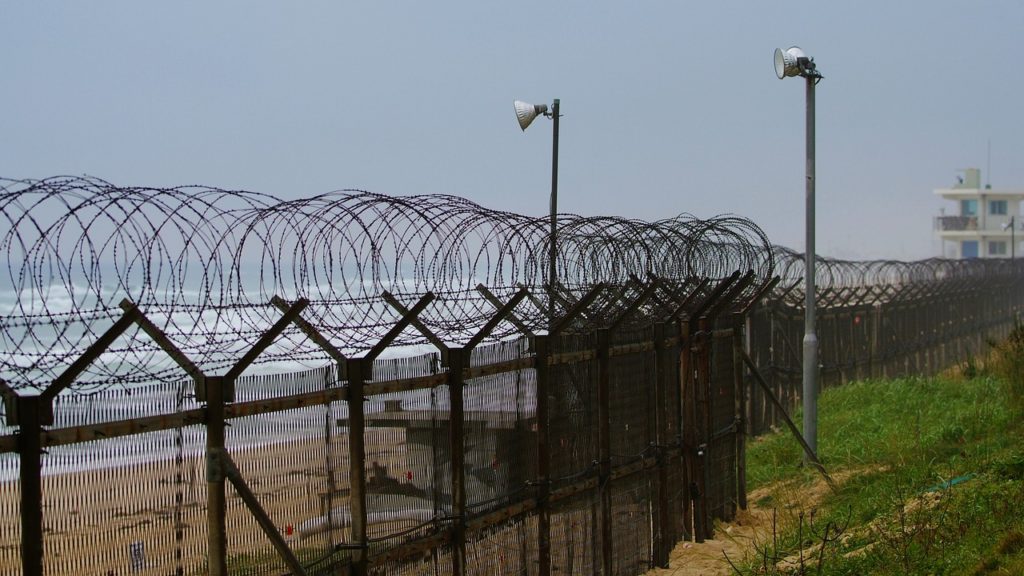
At about an hour’s drive from Sokcho you can visit the Goseong Unification Observatory and the DMZ museum for a peek into North Korea. It’s easy to reach by car, but not so easy otherwise. Compared to the DMZ near Paju, this is a very quiet and desolate place. But if you’re looking for a less touristy border experience, then Goseong is a good option.
Opening hours
From 09:00 with a final departure time from the security point of 15:50 in winter, 16:20 in spring and fall and 17:30 in summer.
Eulji Observatory (Yanggu)
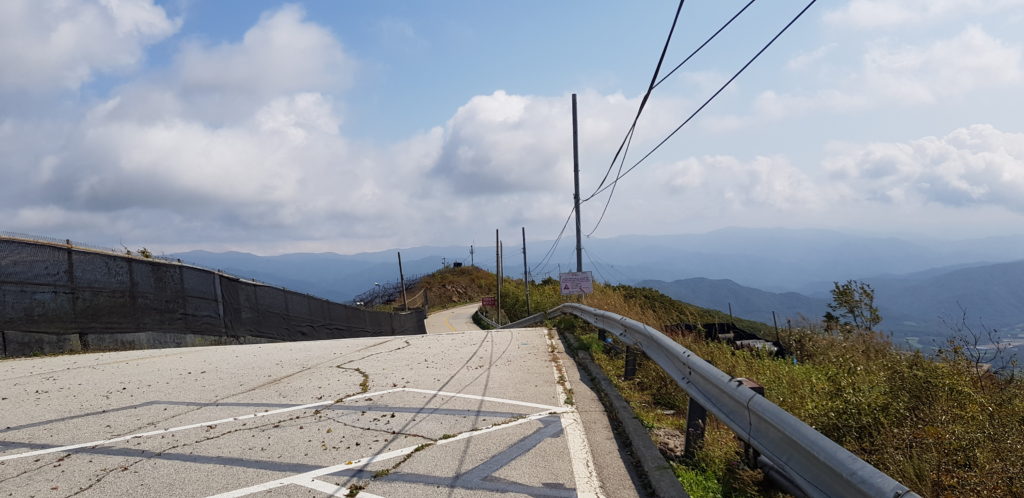
Also at an hour’s drive from Sokcho you can visit Eulji Observatory for a different border experience. Eulji Observatory is located at the ridge of Gachilbong Peak at only 1km from the DMZ. What makes this one more interesting is that there is also an infiltration tunnel to explore and a ‘Punchbowl’ (Haean basin) with a nice view of the surrounding area to visit.
Practical information
Before you can visit the tunnel you need to stop by Unification Hall to register your visit. They will give you a blue paper for access to Eulji Observatory and a yellow and pink paper for the 4th Infiltration Tunnel. Make sure you don’t hand in your yellow or pink paper at Eulji Observatory (that happened to us: the soldier at the guard post wouldn’t let us leave with our yellow paper) or you’ll have to get a new one at the Unification Hall before visiting the Tunnel. In the Unification Hall, you can find Exhibitions and an Agricultural Speciality Market. Also nearby is a War Memorial Museum.
Opening hours
March – October 09:00 – 18:00; November – February 09:00 – 17:00. Last admission time is one hour before closing. You’re not allowed to enter the 4th Infiltration Tunnel during lunch time (12:00 – 13:00).
A visit to the observatory and tunnel is only possible by car or organized tour; no bicycles or motorcycles allowed.
What to read when visiting Sokcho
Elisa Shua Dusapin - Winter in Sokcho
Winter in Sokcho by French author Elisa Shua Dusapin is a beautiful story set in South Korea, wonderfully crafted with a deeper layer underneath.
It’s winter in Sokcho, a tourist town on the border between South and North Korea. The cold slows everything down. Bodies are red and raw, the fish turn venomous, beyond the beach guns point out from the North’s watchtowers. A young French Korean woman works as a receptionist in a tired guesthouse. One evening, an unexpected guest arrives: a French cartoonist determined to find inspiration in this desolate landscape.
The two form an uneasy relationship. When she agrees to accompany him on trips to discover an ‘authentic’ Korea, they visit snowy mountaintops and dramatic waterfalls, and cross into North Korea. But he takes no interest in the Sokcho she knows – the gaudy neon lights, the scars of war, the fish market where her mother works. As she’s pulled into his vision and taken in by his drawings, she strikes upon a way to finally be seen.
Interested? Get your copy from Amazon.
From Sokcho you can reach Eulji Observatory and Goseong Unification Observatory near the border with North Korea within an hour and Abai Village also has a link with North Korean expats. So my other reading recommendation for this part of the trip is:
Masaji Ishikawa - A River of Darkness: One Man’s Escape from North Korea
About the treatment of someone stuck between two worlds. It makes you want to fix the world, but just like the main character, you probably won’t be able to do anything about it.
Half-Korean, half-Japanese, Masaji Ishikawa has spent his whole life feeling like a man without a country. This feeling only deepened when his family moved from Japan to North Korea when Ishikawa was just thirteen years old, and unwittingly became members of the lowest social caste. His father, himself a Korean national, was lured to the new Communist country by promises of abundant work, education for his children, and a higher station in society. But the reality of their new life was far from utopian.
Interested? Get your copy from Amazon.
Planning your itinerary
Check out my Highlights of South Korea post to find out how you can easily add Sokcho to your travel itinerary for South Korea.
